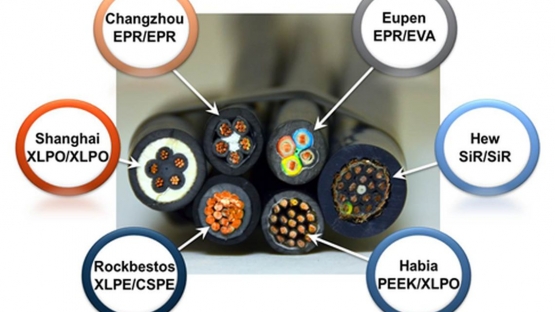The publication describes the fundamentals of cable performance and condition monitoring techniques. It identifies those techniques that show potential for further development and eventual implementation into a cable ageing management programme.
The group of experts involved in the IAEA Coordinated Research Project (CRP I21021) established a benchmarking programme to provide guidelines for monitoring the performance of insulation and jacket materials of existing cables and develop a programme of cable degradation monitoring, focusing on low voltage instrumentation and control (I&C) cables. However, the same principles and techniques may be applied to all cable types since the materials and degradation mechanisms are generally the same.
“In instrumentation and control systems, cable ageing and the need for condition monitoring is one of the most important aspects of plant life extension,” explained Ki-Sig Kang, IAEA Scientific Secretary of the CRP. Cables, especially their insulation and jacket material, are vulnerable to ageing degradation during normal operation. “Condition monitoring techniques yield usable and traceable results,” he said.
Six manufacturers from Belgium, China, Sweden, Germany and the USA had donated cable samples for the benchmark analysis. These samples were aged in an irradiation cell or a thermal chamber, replicating thermal or radiation conditions in a nuclear power plant. Test results from before and after ageing were compared to identify best condition monitoring techniques and provide recommendations for their improvement. In particular, 12 types of cable insulations or jacket materials were tested using 14 different condition monitoring techniques.
The results of the benchmark analyses indicated that in situ tests of the cables did not show great promise against degradation or ageing, although these methods are known to be very effective for finding and locating faults in cable insulation material. Instead, electrical methods such as insulation resistance and reflectometry techniques can be more effective for locating insulation damage, hot spots, or other faults in various cable types. “The advantage of electrical methods is that they can be used for testing of installed cables while the nuclear power plant is in operation,” Kang said.
The new publication updates information in the IAEA Nuclear Energy Series publication of 2012 on Assessing and Managing Cable Ageing in Nuclear Power Plants (NP-T-3.6).

 17.04.2024 18:00
17.04.2024 18:00
 17.04.2024 11:30
17.04.2024 11:30
 16.04.2024 11:45
16.04.2024 11:45